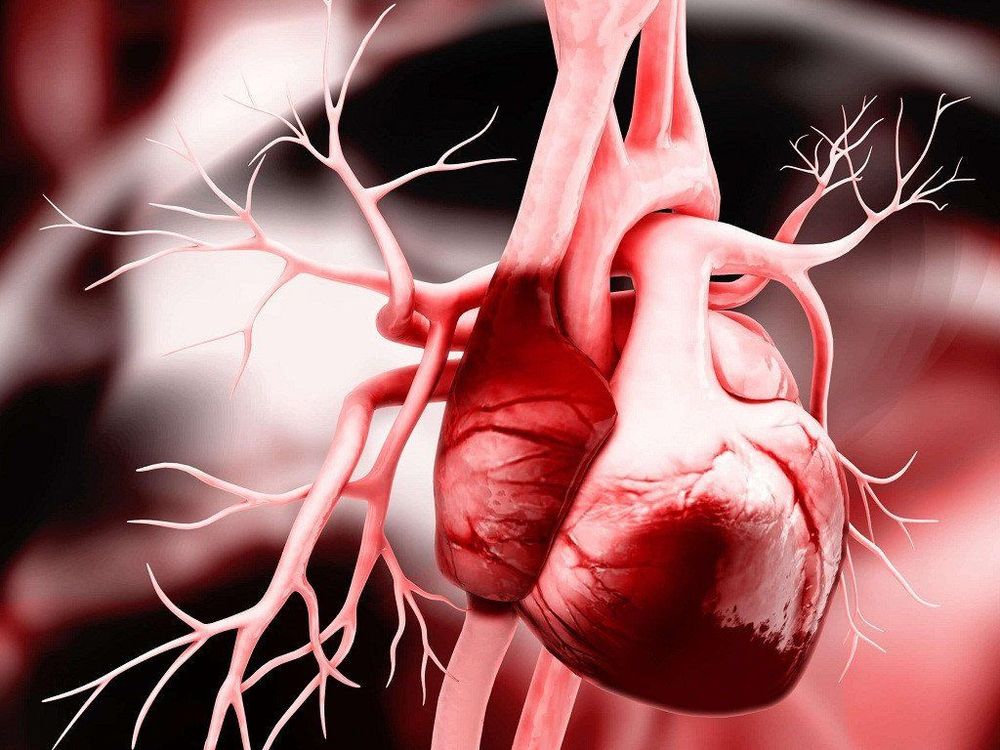This is an automatically translated article.
The article was professionally consulted with Specialist Doctor II Nguyen Quoc Viet - Interventional Cardiologist - Department of Medical Examination & Internal Medicine - Vinmec Danang International General Hospital.Recent advances in imaging techniques have created new opportunities for studying the anatomy, physiology, and pathophysiology of right ventricular failure (RV). However, the failure of RV treatment remains challenging. Optimal management should consider the anatomical and physiological features of RV.
1. What is acute right ventricular failure?
Right ventricular failure (RV) is a clinical syndrome in which the right ventricle is unable to provide adequate blood flow to the pulmonary circulation under conditions of normal central venous pressure.2. Etiology and pathophysiology of right ventricular (RV) failure
Normal RV function is the interplay between preload, contractility, afterload, ventricular interdependence, and heart rate. Most cases of right ventricular failure are followed by existing, new-onset heart/lung disease, or a combination of the two. Causes of right ventricular failure include:Extensive pulmonary infarction > 25%; ARDS 20-25%; 20-25% right ventricular myocardial infarction; Acute pulmonary hypertension; Ventilator 5-30%; Infections and cardiomyopathy due to infection g 4-20%; After heart-lung transplant surgery 10-30%; Use of instruments after left ventricular support; Pericardial disease.
3. Right ventricular heart failure in which disease?
3.1 Right ventricular failure in heart disease Increased afterload is the main pathophysiological mechanism of right ventricular failure of pulmonary and cardiac origin. The rates of left ventricular systolic or diastolic dysfunction and pulmonary (postcapillary) hypertension in patients with RV failure are particularly high. This corroborates the view that most right ventricular failure is secondary to heart or left lung (vascular) disease.Increased afterload is also a major cause of ventricular failure in patients with systemic RV (eg, patients after repair of atrial displacement for complete transposition of the great arteries, with congenital transposition of the great arteries). or after Fontan palliative surgery) and due to RV outlet obstruction. In patients with other forms of congenital heart disease, chronic volume overload can cause RV dilation and failure.
Heart diseases involving the right heart can primarily decrease RV contractility or, through decreased cardiac output, decrease RV preload, contributing to RV failure. Almost all cardiomyopathy involving the left heart can affect RV. Cardiomyopathies with major RV involvement include arrhythmic RV cardiomyopathy (characterized by fibrous replacement of the RV myocardium).
Pericardial diseases can alter RV preload and ventricular interdependence, while arrhythmias can exacerbate RV dysfunction. Notably, ischemic RV failure due to volume overloading or mechanical ventilation is commonly seen in critically ill patients, whereas ischemic RV damage is sometimes seen after cardiac surgery. Finally, RV failure may be exacerbated in patients with implanted left ventricular assist device (LVAD), causing high morbidity and mortality and requiring temporary RV support. This topic has been extensively reviewed elsewhere.

In the setting of acute respiratory failure in a previously healthy person, impending RV failure is seen almost exclusively with major pulmonary embolism. It should be noted that an increase in pulmonary pressure after acute pulmonary embolism is observed only when more than half of the pulmonary vessels are obstructed by thrombotic material. This is because the expansion and creation of extra pulmonary capillaries can reduce vascular resistance and compensate for changes in circulation. When thromboembolism extends to more than 50% of the pulmonary vessels and in turn, hypertension occurs, uncorrected RV can overcome mean pulmonary artery pressures up to 40 mmHg. Higher consequences lead to acute RV failure and obstructive shock. Conversely, if acute pulmonary embolism is present and the RV is exposed to higher tolerable pressure values, pre-existing pulmonary hypertension (i.e., presence of hypertension) must be assumed. pulmonary artery) with anterior RV adaptation.
Many chronic lung diseases affect the pulmonary circulation and right heart, but chronic obstructive pulmonary disease (COPD) is the most common cause of respiratory failure and cardiac arrhythmias. COPD increases RV afterload by several mechanisms, including rarely at the bedside, hypercapnia and acidosis, increased pulmonary inflation, airway obstruction, endothelial dysfunction, and hypoxemia. Among these factors, hypoxia is thought to be the major cause of pulmonary hypertension and subsequent RV failure. Hypoxic pulmonary vasoconstriction leads to increased pulmonary pressure and, when persistent, revascularization and fixed pulmonary arterial hypertension.
The presence of pulmonary hypertension has long been considered a precondition for development. Recent data challenge this assumption and suggest that, in patients with pulmonary disease, structural alterations in cardiac cells precede the development of manifest pulmonary hypertension. Given its impact on RV function, pulmonary hypertension over airflow limitation is the strongest predictor of an adverse outcome and death in patients with pulmonary disease.
4. Diagnosis of right ventricular failure
4.1. Clinical signs Hypoxia; Signs of systemic congestion: Distended and distended neck veins, hepatic - carotid artery reaction; Pericardial effusion, with peripheral edema, hepatosplenomegaly due to congestion, peritoneal effusion, whole body edema. Signs of T(P) dysfunction: T3 sound, tricuspid regurgitation murmur, hepatosplenomegaly, signs of combined ventricular (T) disorder; Reverse circuit. Signs of decreased cardiac output: Blood pressure drops, pulse is rapid, fingertips are cold, central nervous system is abnormal. 4.2. Electrocardiogram The electrocardiogram in chronic RV failure often shows right axis deviation as a result of RV hypertrophy. Other ECG criteria are the RS ratio in lead V5; V6 ≤1, SV5; V 6≥7 mm, P-pulmonale or a combination of these elements. While the sensitivity of these criteria is quite low (18–43%), the specificity ranges from 83% to 95%. The RV strain is sometimes seen in high-volume pulmonary embolism such as initial S-shift in I, initial Q-shift in III and T-Inverse in III (high specificity, low sensitivity), as well as in V1– V4. Furthermore, RV failure is often accompanied by atrial flutter or AF.4.3. Echocardiography Excludes an extrinsic cause (acute cardiac tamponade). Assess the degree of collapse and respiratory diameter of the inferior vena cava to assess atrial pressure (P). When there is a pressure difference across the tricuspid valve, evaluate PAPs through this difference. Assess right ventricular function.

5. Treatment of acute right ventricular failure
5.1. Treatment process for acute right ventricular failure Step 1: Assess severity:Evaluate clinical symptoms such as: arterial blood pressure, neurological signs, use of diuretics. Evaluation of biochemical tests (lactate, liver marquer, renal function, BNP, troponin). Imaging (echocardiogram, CT scan). Evaluation of central venous and pulmonary artery catheters. Step 2:
Identify predisposing factors and treat: Sepsis, arrhythmia, drug discontinuation. Optimal treatment of specific causes: coronary intervention for ventricular (P) MI, reperfusion for high-risk pulmonary embolism. Step 3: Optimizing the amount of fluid in the body:
Intravenous diuretic if fluid overload. Renal replacement therapy if the patient's condition does not respond to diuretics. Careful fluid resuscitation if CVP is low, avoid fluid overload. Step 4: Maintain arterial blood pressure: Use norepinephrine.
Step 5: Check vasopressor drugs that reduce cardiac filling pressure such as:
Dobutamine, Levosimendan. Phosphodiesterase inhibitor. Step 6: Reduce afterload burden:
NO hit. Inhaled prostacyclin. 5.2. Perform treatment for acute right ventricular failure Reduce the amount of fluid: If the amount of fluid is too much, causing the right ventricle to be overloaded, causing the heart wall to stretch, reducing spasm, making the tricuspid regurgitation worse. increased effect on the biventricular relationship, decreased left ventricular filling and, as a result, decreased cardiac output. Therefore, when introducing fluids into the human body, care must be taken and calculated carefully under the monitoring of central venous pressure.
Diuretic: Treatment with diuretics, the amount of fluid in the venous system is properly redistributed, which will help quickly and effectively relieve the clinical symptoms.
Use vasopressor therapy and inotropic drugs: Used in case of right ventricular failure when hemodynamic disturbances. Some drugs are prescribed by doctors to use for patients:
Noradrenalin: Improves blood pressure, increases blood flow to the brain. Dobutamine, Levosimendan and phosphodiesterase III inhibitors: Increase contractility and increase cardiac output. Using a ventilator to support the respiratory circulation: To support after a heart transplant or after using devices to support the left ventricle, having a right ventricular infarction. Extracorporeal membrane oxygenation machine/Life Support Equipment (ECMO /ECLS): Provides oxygen quickly in a short time.
Heart transplant : This is the method of last resort when the treatment of right ventricular failure no longer responds.
In summary, right ventricular failure is a dangerous disease that needs to be examined and treated promptly. Currently, Cardiovascular Center - Vinmec International General Hospital is one of the leading centers in the country for examination, diagnosis, screening and treatment of cardiovascular diseases. Vinmec not only has the convergence of a team of experienced and reputable leading experts in the field of surgical treatment, internal medicine, interventional cardiac catheterization, but also has a system of modern equipment, on par with The most prestigious hospitals in the world such as: MRI 3 Tesla (Siemens), CT 640 (Toshiba), high-end endoscopy equipment EVIS EXERA III (Olympus Japan), high anesthesia system Avace level, Hybrid operating room according to international standards... Especially, with the space designed according to 5-star hotel standards, Vinmec ensures to bring patients the most comfortable, friendly and reassuring comfort. .
Please dial HOTLINE for more information or register for an appointment HERE. Download MyVinmec app to make appointments faster and to manage your bookings easily.














